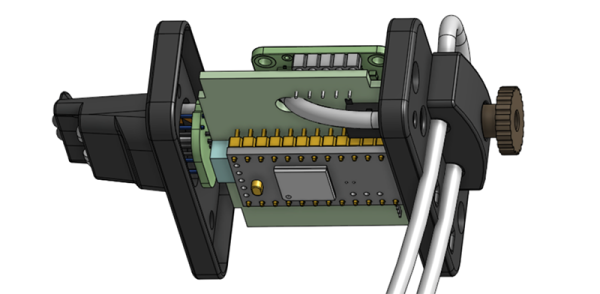When it comes to music, the human voice is the most incredible instrument. From Tuvan throat singing to sopranos belting out an aria, the human vocal tract has evolved over millions of years to be the greatest musical instrument. We haven’t quite gotten to the point where we can implant autotune in our vocal cords, but this project for the Hackaday Prize aims to be a bridge between singers and instrumentalists. It’s a hands-free instrument that relies on vocal gesture sensing to drive electronic musical instruments.
The act of speaking requires dozens of muscles, and of course no device that measures how the human vocal tract is shaped will be able to measure all of them, but the Multiwind does manage to measure breathing in, breathing out, the shape of the lower lip, the upper lip, and its own tilt, giving it far more feedback than any traditional wind instrument. It does this with IMUs and a mouthpiece mounted on a mount that is seemingly inspired by one of those hands-free harmonica neck mounts.
The output for this device is MIDI, although the team behind this build already has data streaming to an instance of Max, and once you have that, you have every musical instrument imaginable. It’s an innovative musical instrument, and something we’re really excited to see the results of.















